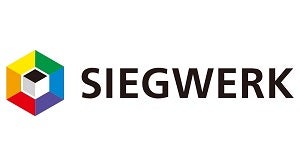Siegwerk, a family-owned company known for producing inks and coatings for packaging, may seem like an unlikely disruptor in the value chain. But the company is spearheading a number of innovative solutions within the packaging industry to address some of the most pressing issues facing brand owners today, from engaging consumers in the ‘new normal’ to meeting expectations around sustainability. We talk to Belal Habib, Siegwerk’s Head of Global Brand Owner Collaboration, about the company’s strategy in working with brand owners.
What are the primary trends and challenges for brand owners when it comes to packaging?
Simple handling, convenience and functional features protecting the product and extending its shelf life are already considered to be standard packaging features by consumers today. However, in the shadow of the Covid-19 pandemic, consumers will understandably be even more sensitive to product safety and quality assurance. Given the need to respond to the climate crisis, sustainable and recyclable packaging is more in demand than ever before.
Two specific trends or shifts in the sustainability arena are the shift towards paperization, and the shift to mono-materials.
To stay competitive it is not only necessary to further invest in new packaging features and technologies, but it is also important to work efficiently, economically and flexibly to be able to quickly respond to changing market trends.
How does Siegwerk support brand owners in this regard?
In the packaging industry, aspects of safety, circularity and efficiency are fundamental to success. However, the aforementioned elements of packaging performance are underpinned by functionality. Siegwerk enables packaging performance for brand owners through tailormade solutions. We know that packaging specifications operate at the sharp end of cost versus performance, and that, as a result, changes to these specifications carry extremely high risk. Packaging applications at brand owners are therefore a very costly aspect, and you need the right expertise to implement genuine solutions that are above all, functional, but also meet the requirements of safety, circularity and efficiency.
For example, if we consider the two shifts I highlighted earlier, Siegwerk helps Brand Owners meet requirements for paperization by developing coatings for paper and board, or the need for mono-material packaging by providing surface printing solutions, for instance.
We also have innovative solutions that enable the deinking and delamination of packaging, separating the layers and removing the ink to make recycling of the packaging easier.
What makes your approach successful?
We are agnostic when it comes to substrates and solutions. Siegwerk is not biased to a specific solution to improve packaging performance. For instance, we understand that true circularity can only be implemented with a solution that provides a benefit to all stakeholders in the value chain. Additionally, next to our inks and coatings solutions we also focus on parts of the value chain that are not always addressed. For example, small brand owners and start-ups are supported through our Siegwerk Ventures team to provide solutions such as digitally printed and highly sustainable stand-up pouches.
It sounds like the approach meets the brand owner where they are?
Exactly. In collaboration with customers, Siegwerk’s experts analyze the equipment and processes used, in order to identify improvement potential and point out concrete realization possibilities. For example, if the experts find out that it would be possible to run machines faster to increase the output and generate more revenues, they would offer suitable ink solutions to realize the same high-quality output at higher speed without increasing the complexity. The same is true for brand owners. We assess the needs and the current situation and then work with brand owners to find cost-efficient solutions that optimize performance. It helps that we understand complexities, which may be unique to a specific region. We are a global company organized in business units to make sure we have a full focus on specific packaging segments such as flexible packaging, labels and sleeves, folding carton, paper and board etc.
You’ve spoken about efficiency, functionality and circularity in the packaging industry. How does Siegwerk approach safety requirements?
Siegwerk has a well-established reputation for our high product safety standards. We can provide support and expertise to address product safety aspects, and all our solutions fulfil any relevant international or local regulation to the fullest extent. This includes all solutions for the nutrition, pharmaceutical and hygiene sectors.
But our understanding of safety also extends to environmental safety. Siegwerk ensures safety in our supply chain by not only testing material quality but also requesting high environmental safety standards and fair and responsible working conditions at our suppliers.
What are some emerging innovations in the packaging industry that excite you?
There are many, but one I can highlight and that Siegwerk is a part of is the Holy Grail 2.0 initiative, contributing to digital watermark technology for packaging in the European Union.
The new technology works like a digital passport for packaging. Digital watermarks the size of a postage stamp are integrated multiple times into the surface of labels or paper-based packaging. In the end, the digital watermark can be detected on the sorting line of a waste sorting facility. This will then enable an improved and more accurate sorting process. This in turn results in higher-quality recyclates, which can be re-used in even more new products and thus support a circular economy.
There are more than 85 partners to this initiative, and I think that’s the key takeaway from any successful solution: we need strong partnerships with no weak links to make these solutions work.
For more enquiries, please email boc@siegwerk.com.


